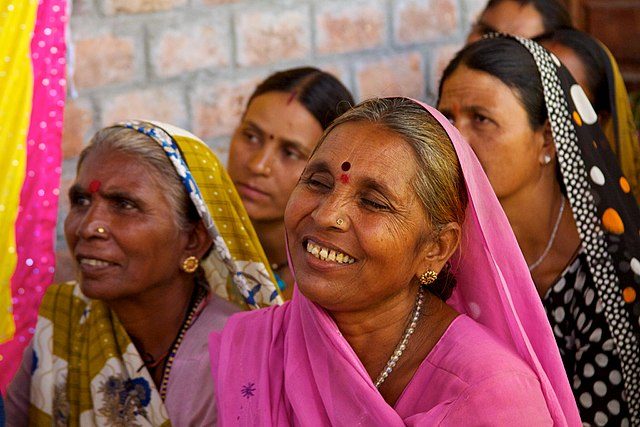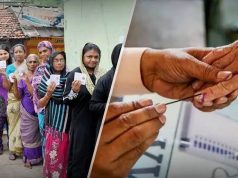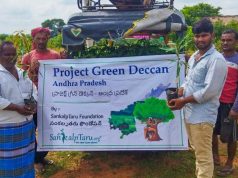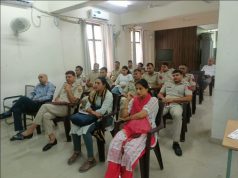The Quandary of Social Organisations – Depth Vs. Width
In the recent past, I have had the opportunity of working with some really smart, bright, passionate social entrepreneurs – people looking to address complex social issues through for-profit and not-for-profit models. While their energy and enthusiasm is infectious, one of the questions we always struggle with is, in defining the actual issue that the organisation would like to help resolve, the scope of work, the vision or whatever you want to call it. Any social issue is always a consequence of multiple factors ranging across really different domains (education, health, livelihoods, gender, child protection, nutrition etc.).
So do we take up the massive challenge of addressing all /most factors causing a particular issue or focus our efforts on one part of the problem? The natural inclination would be to opt for the former – why would we not? After all, only then would the issue be resolved, right? However, reality is not always so intuitively simple. Let’s explore this question a little bit using the context of an organisation which had the desire to work with children who were rag pickers to help them get out of that life.
The first step really was to understand why children ended up as rag pickers – chronic inter-generational poverty (absence of livelihood opportunities, resources, requisite skillsets), lack of parental belief in education, absence of good schools (govt. or private) in the vicinity, vulnerability to health crises and its far-reaching effect on ability to live and work, social need to take care of younger siblings, gender issues leading to a lack of voice for women (economic dependence, more number of children) …The list can go on.
The organisation started bridge centres to help children get into mainstream schools. Over time, it got success in getting some of its children admitted to those schools but given the poor quality of teaching-learning there, children started coming back to these centres. And so it became a bridge plus remedial centre. Given its increasing connect with the community, they saw the need to start working with the mothers to strengthen their voice and help them achieve economic self-sufficiency. This led to the beginning of skilling programmes for women with the additional challenge of marketing those hand made products made by the women. Slowly, the scope expanded to include a health centre providing affordable medicines to the local population!
One would say that’s great evolution. The organisation was wonderfully positioned to actually make a significant impact on the lives of the rag picking children…Right? But this evolution came with a lot of its own kind of issues, some manageable and others not so.
Over time, the organisation remained founder driven, surviving on the passion and good intent of the one person who was the leading it – The person herself was just being driven by passion / adrenaline and did not have either the requisite knowledge or skillsets nor the interest required to build an organisation to run such complex and multi-sectoral operations (We just want to work on the ground with children, why should we have to do all this organization building stuff?!)
Since all of this was being done and funded internally, costs increased dramatically without an increase in the organisational ability to raise funds. In fact, one of the biggest gaps was the absence of a coherent story of change which linked this work together – How was all this work really going to transform the lives of the children there? The per child annual budget rose to Rs. 25,000 as it had to include a variety of costs!
There was no clear thought on how many years children should be spending in a bridge programme before joining school, what was the benefit of joining schools if the students came back to the centre for remedial education, should there be a sustainable revenue source linked to the remedial centre, should we look at getting our students certified through the open schooling system etc. The knowledge, skills and frameworks required to run a bridge programme is fairly different from that of running a remedial programme over time – for small slum based localities, if a bridge programme is successful (includes changing parental mindsets towards schooling), then it should possibly look at closing down after a few years, whereas a remedial centre needs to be run continuously and thereby sustainability becomes a bigger question (Raising short term funding for bridge centres is very different from raising continuous year on year funding for running remedial centres)
Over and above this was the challenge of actually selling the products that women were producing and making sure that there was a sustained reasonable demand for them. It required an understanding of fashion trends, quality, sales channels, pricing, brand building etc.
What choices does one make in a situation like this, especially when it’s clear that sustainable change is impossible without the presence of a multi-sectoral strategic approach? Is there a right answer we can state with absolute certainty…Definitely not. We can possibly look at various options and choose the one most amenable to the founder / founding team.
Option 1: Choose one intervention and build expertise in that over time (say expertise in running bridge centres with the vision of making sure that no child from such communities across your city/district/state is out of school
Option 2: Start with Option 1, over time build credibility and a strong network of donors who swear by your ability to execute. Through a strong track record of success, build an aspirational story to raise money for other areas of work you want to get into. Use that to build a strong organisation which can visualise and execute holistic change based on multiple interventions.
Option 3: Start with Option 1 internally and build a network of partners who can take up and manage some of the other areas of work. E.g. a partner to run the skilling programme, someone for health, someone for women empowerment etc. Leverage on each other’s knowledge, skills and physical infrastructure to synergize and create strong change models.
Am sure there could be many more options to think about and exercise. It’s important to put that deep thought in answering this question of width versus depth and choosing between the subsequent operating models which emerge from the same. It could just be the difference between short term, reversible benefits versus sustainable, scaleable change.
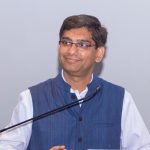 Gaurav Shah, an MBA from IIM Calcutta and an Engineer from BITS, Pilani. With over 14 years of experience he now works as a Co-Founder of the Indian School of Development Management (ISDM). His areas of experience include program management and implementation, strategic planning, organization restructuring and design, networks and partnerships,etc. He is passionate about making a high impact by working in the livelihoods, skill building, education through initiatives in institutional set-up and strengthening, capacity building, social inclusion based on the universal values on equity and fairness.
Gaurav Shah, an MBA from IIM Calcutta and an Engineer from BITS, Pilani. With over 14 years of experience he now works as a Co-Founder of the Indian School of Development Management (ISDM). His areas of experience include program management and implementation, strategic planning, organization restructuring and design, networks and partnerships,etc. He is passionate about making a high impact by working in the livelihoods, skill building, education through initiatives in institutional set-up and strengthening, capacity building, social inclusion based on the universal values on equity and fairness.
Views of the author are personal and do not necessarily represent the website’s views.
Thank you for reading the story until the very end. We appreciate the time you have given us. In addition, your thoughts and inputs will genuinely make a difference to us. Please do drop in a line and help us do better.
Regards,
The CSR Journal Team



